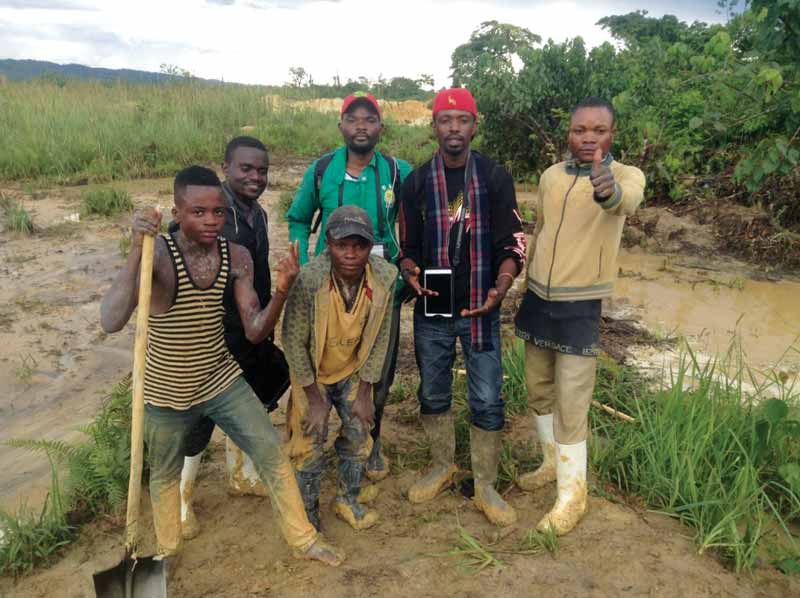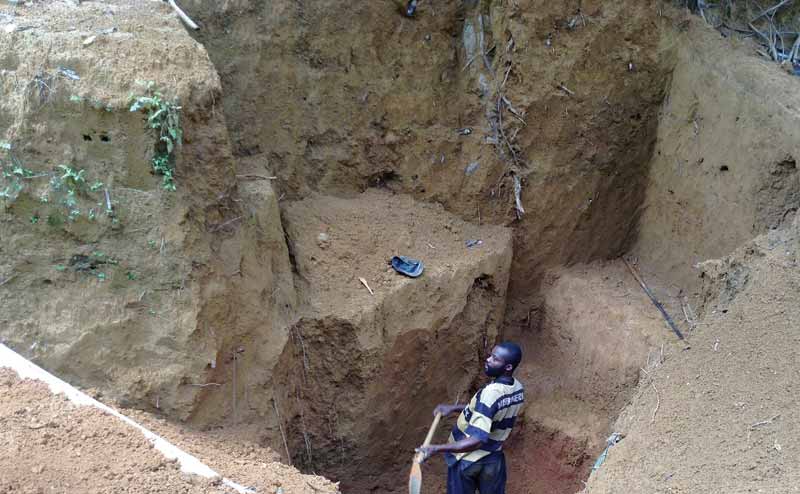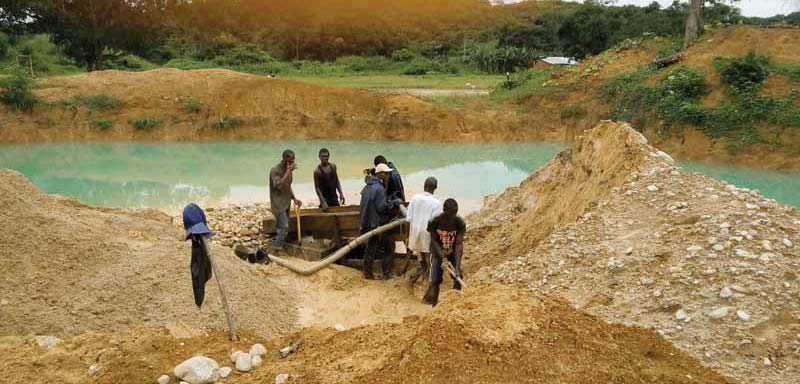By Ian Smillie
The Kimberley Process (KP), which aims to halt the flow of conflict diamonds, never loses its power to frustrate and disappoint. Perhaps this is because the stakes are so high, the possibilities so real, and the results of its initiatives so meagre.
The 15th KP Plenary Meeting, held in Brussels between November 12 and 16, 2018, ran true to form, burying proposals for meaningful change and actively misreading an advertising drive by manufacturers of synthetic diamonds targeting the industry’s most vulnerable weakness: artisanally mined diamonds.
The 2018 plenary struggled with long-outstanding issues: a slow, secretive peer review mechanism, the creation of a badly needed secretariat for administrative backup, and a possible multi-donor trust fund. Despite a great deal of churn and paperwork over the past two years, none of these issues made it out of committee in November with more than a bit of cosmetic makeup or the promise of further study.

The most enduring and difficult issue for the Kimberley Process remains the definition of conflict diamonds. The original 2003 definition was confined to the realm of warlords and civil conflict, but times have changed, as have the industry, its critics, and most notably, consumers—especially millennials, who are making increasingly strident demands for ethical products. All of these groups have pushed the KP toward a much wider concept of conflict, one that would include reference to violence perpetrated by public and private security forces, extortion, bribery and dispossession, forced labour, child labour, and violations of international humanitarian law.
A remarkable proposal including all of this and more was worked out between the KP’s Civil Society Coalition (CSC) and the World Diamond Council (WDC) and presented by the Government of Canada. Discussion was, however, disallowed on procedural grounds. The final communiqué of the plenary simply “noted” the submission and said, vaguely, that it and other contributions would be “compiled and considered.”
The link between an expanded definition of conflict diamonds and synthetics may not seem obvious at first glance, but it is fundamental. Apart from the fact they are cheaper than mined diamonds, synthetics pose two kinds of challenges to the industry as a whole. The first is they can be and probably are being passed off as natural and dropped ever more frequently into the pipeline at its weakest points. This is easy enough to accomplish wherever traceability is weak, and especially where KP review reports are pathologically late and their recommendations—oddly confidential—are largely ignored.
More problematic, however, is the growth in advertising by synthetics manufacturers and retailers, attacking the industry’s most obvious Achilles heel: artisanal mining. Artisanally mined diamonds are produced in 18 countries in Africa and South America and are important export earners. They are also a major source of livelihoods and family income. While artisanal diamond mining represents less than 20 per cent of the industry’s annual output by volume and less than five per cent by value, it engages more than 1.5 million diggers, supporting as many as 10 million family members.
Typically, however, artisanal miners earn less than $2 a day. They often work illegally and under terrible conditions; violence and child labour are common, and environmental damage is endemic. This large, increasingly obvious target flashes like a bright neon sign on the back of the entire industry. MiaDonna, an American synthetics company, says in an ad, “Unlike earth-mined diamonds, our grown diamonds are created without negatively harming native communities, society, or the Earth.”

Diamond Foundry, another American firm, says:
Since the Kimberley Process doesn’t guard against workers rights abuses or unsafe mining conditions, many so-called conflict free diamonds are less than ethical. Moreover, since it’s difficult to track mined diamonds to their source, the Kimberley Process may not even accomplish its own limited objective. Masking the origin of a blood diamond and passing it off as a certified diamond is often as easy as bribing the right official.
MiaDonna, evidently aware putting artisanal miners out of work may seem heartless, says it contributes to projects such as an orphanage in Liberia, helping it to become “self-sustainable, growing food and raising livestock.”
During the Brussels meeting there were several heated discussions about synthetics, most focussing on semantics and perception rather than reality. There was a lengthy debate about the correct terminology for synthetics. There were demands negative artisanal mining imagery be somehow banned (good luck with that), and it was agreed a disaggregated database should be developed to determine exactly where and what volume of artisanal diamonds are produced in a year. This was seen as a possible way of protecting countries where there is no artisanal production, but of course it would also be helpful in creating a two-tier market that could discriminate against some or all of the countries where such diamonds are mined.
It might have been more constructive for the plenary to think first about preventing the introduction of undisclosed synthetics into the diamond mainstream by strengthening local capacity and global traceability requirements, including in some alluvial diamond-mining countries. Secure traceability could also be strengthened by timely peer reviews, finalized in less than six months. (Several peer review reports remain unfinished after three years!) There should also be an insistence recommendations be discussed openly and taken seriously.

On the day the Kimberley Process meeting opened, Amnesty International and four other nongovernmental organizations (NGOs) released a statement condemning the diamond industry:
Time is up for the diamond industry. Image is everything to the value of diamonds, yet the industry continues to be tainted by association with human rights abuses like child labour and forced labour, as well as conflict, environmental damage, and corruption. If the diamond industry genuinely wants to address these issues, it needs to clean-up its act and no longer approach respect for human rights and responsible business as an optional exercise.
It is easy enough to simply blame the industry, but these provisions and more were exactly what was proposed by the industry to the KP Plenary—specifically, by the World Diamond Council in partnership with the Civil Society Coalition and the Government of Canada. Discussion was blocked by governments—not just those that fear any reference to human rights, but also some with important artisanal mining sectors. These governments could only gain from a wider definition and the benefits it would deliver, if heeded, to their image, their economies, and the industry as a whole.
The time has come for the governments of artisanal diamond-producing countries in Africa and South America to read the writing on the wall—and the advertising. If the Kimberley Process and those behind it will not take action on enforcement and on widening its scope, unpleasant options will soon enough present themselves.
One possibility, noted earlier, might be the creation of a two-tier diamond market where—in the face of Kimberley Process inattention and intransigence—the industry simply refuses all dealings with countries where diamonds are produced artisanally. In this scenario, those countries would have to settle for heavily discounted diamonds and—as with MiaDonna—better orphanages.
A second might be for the industry to create its own review mechanism and to certify artisanal diamond-producing countries that meet not just basic KP standards, but also those of a higher order, such as those developed by the Diamond Development Initiative (DDI) and others.
The better option—much less disruptive and infinitely preferable—would be to change the reality and therefore the perception (and the negative advertising) of artisanal mining. This would involve bringing artisanal miners into the formal economy and treating them as citizens whose livelihoods should be protected and improved through, inter alia:
- simplified, inexpensive processes for legalization and organization;
- better working conditions;
- human and environmental protection; and
- access to fair market prices.
The challenge, however, is clear: the longer the Kimberley Process and participating governments take to engage seriously on these issues, the more damage it—and they—will do to the industry they are supposed to protect and support.
 Ian Smillie was a founding participant in the creation of the Kimberley Process. He is the author of Blood on the Stone and Diamonds and he chairs the board of the Diamond Development Initiative (DDI). The views expressed in this article are his alone. Smillie can be reached via e-mail by contacting ismillie@magma.ca.
Ian Smillie was a founding participant in the creation of the Kimberley Process. He is the author of Blood on the Stone and Diamonds and he chairs the board of the Diamond Development Initiative (DDI). The views expressed in this article are his alone. Smillie can be reached via e-mail by contacting ismillie@magma.ca.






